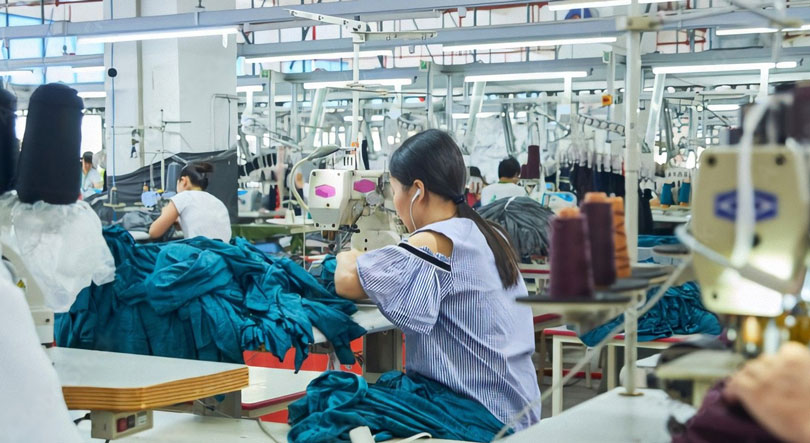
Our buyers often ask us how the working conditions are in the factories where the clothing is manufactured. In this article we will discuss this matter in some detail with some facts we found for you in various public sources.
Why is this important?
When sourcing your fashion products your primary goal might be to make your customers happy with trendy and awesome looks and to run a profitable business while doing so. But of course we don’t wish to do so at the expense of others. This means the people making these products should be safe and fairly treated. We are happy to share with you how the Korean government has worked hard to put safeguards in place to assure this is the case.
No sweatshops in South Korea
We share your concerns about sweatshops and child labor still being used in the fashion industry today. These forms of manufacturing are found in parts of the world where low education limits opportunities for children and where there is widespread poverty. You will not find this in South Korea.
South Korea ratified conventions of the International Labor Organization (ILO) on child labor in 1999 and 2001. In its constitution it establishes the principle that working children get special protections. The Korean government has various regulations in place governing exploitative child labor, such as the Labor Standards Act that sets the minimum age for employment at 15 years and the Elementary and Secondary Education Act that prohibits the employment of children if such employment would interfere with their compulsory school attendance.
Korea has one of the world’s highest-educated labor forces among OECD countries. The resource-poor nation is consistently ranked among the top for global education. Korea has a youth (15-24 years) literacy rate of 100% (2008-2012). In 2017, the country ranked fifth for the percentage of 25- to 64-year-olds that have attained tertiary education with 47.7%.
Korea managed to leave poverty in the past, in part, thanks to high economic growth and increasing minimum wages.
South Korea is a developed country
It is important to realize that our brands primarily manufacture their products in South Korea and that South Korea is very different from the low-labor, developing Asian countries where much of the fashion industry manufacture their product lines. South Korea is a well-developed country and offers its citizen a welfare system which meets international standards.
Just to illustrate Korea’s position in the world: the economic growth rate is outstanding (6.3%) in South Korea. And Korea’s GDP per capita ranked 12th largest among OECD countries in 2019-2020.

Korean Social Security System
To protect the worker’s rights and interests, the Korea government has implemented the minimum wage system in 1988. The minimum wage in South Korea has gradually increased every year in the last decades. In 2019, it was ranked 7th among OECD countries, above Japan and the US. This means that Korean workers are guaranteed a decent salary even for low-skilled work. However, this is also reflected in the product cost: Korean made apparel will cost more than apparel made in countries with lower wages.


Furthermore, Korea has become a country with enforcement on equal employment for both genders. In 2001, the Ministry of Gender Equality was established which shows how serious South Korea takes this matter. South Korea ranked 10th among 189 nations on the 2018 Gender Inequality Index (GII), released by the UNDP.
Workers can get parental leave for one year if they want. And a 90 days maternity leave is an option for pregnant employees.
All people are covered by national health insurance to keep high-quality healthcare affordable for all. And social insurance schemes protect workers against unforeseen cost related to disaster, disease, unemployment, and death. Employment insurance and national pension plans are also available.
More info: https://www.korea.net/AboutKorea/Society/Labor-Social-Welfare-System
Working Condition
The Korean government has been promoting a 5-day and 40-hour work week from 2004.
The chart below shows that the working overtime has become less common between 2006 and 2010 in Korea.

A survey amount 10,000 employees in 2010 shows that almost 70% of the people answered that they were pleased with their work conditions.

Source: https://www.oshresearch.co.uk/2529407A8400006F17E1DDD89154C050842C32CE74C6ACFC408BFDBB936166BF755245212092AEB0/EUROFOUND.EUROPA-%20Working%20conditions%20in%20Korea,%20Surbvey%20highlights.pdf
In conclusion…
The Korean government is safeguarding safety and well-being of workers in the Korean fashion industry. And as a developed country South Korea has outgrown poverty and distanced itself from low-labor countries in Asia where worker exploitation and child labor can still exist. Korean workers receive a fair compensation for their work and are generally satisfied with their working conditions.
We hope that, after reading this information, you feel assured that the products we offer you on this site are manufactured under good working conditions.
